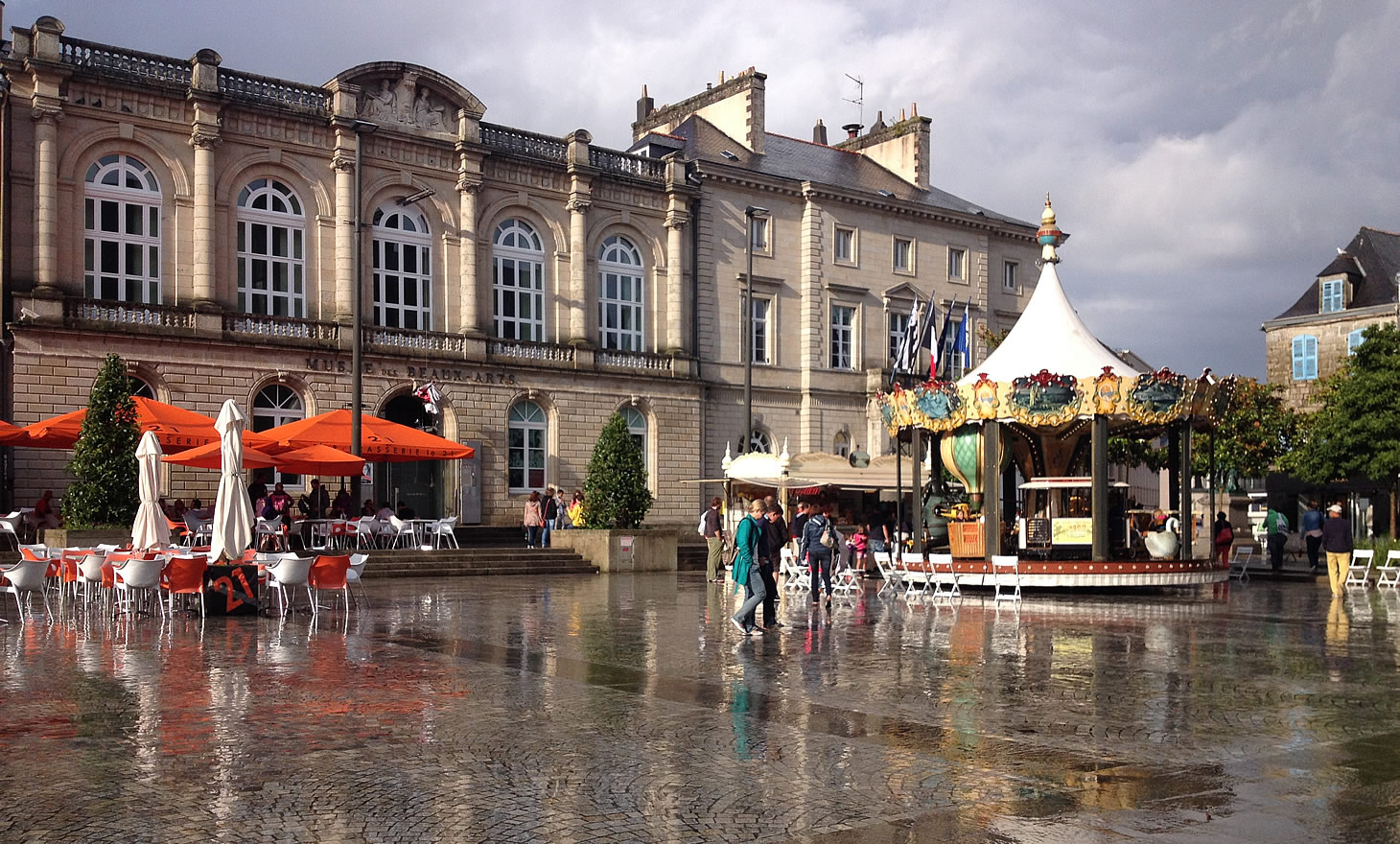QUIMPER CITY CENTRE - mostly circa 2012
Quimper is the ancient capital of Cornouaille, Brittany’s most traditional region, and has a distinctive Breton Celtic character. Its name is the Breton word kemper (cognate to Welsh cymer), meaning "confluence". The town developed at the confluence of the rivers Le Steir and L'Odet. Shops and flags celebrate the region's Celtic heritage.
Quimper was originally settled during Roman times. By AD 495, the town had become a Bishopric. It subsequently became the capital of the counts of Cornouailles. In the eleventh century, it was united with the Duchy of Brittany. During the War of the Breton Succession (1341–1364), the town suffered considerable ruin. In 1364, the duchy passed to the House of Montfort.
The town has a rustic atmosphere, with footbridges spanning the rivers that flow through it. The Church of Locmaria, a Romanesque structure, dates from the eleventh century. The Cathedral of Saint-Corentin, with its Gothic-style façade, was constructed between the thirteenth and sixteenth centuries. It is the oldest Gothic structure in lower Brittany. Its two towers are 76 m (250 feet); its spires were added in the nineteenth century. The fifteenth-century stained glass windows are exceptional. The cathedral is dedicated to Quimper's first bishop, Corentin.
To the cathedral's west are the pedestrianised streets of Vieux Quimper (Old Quimper), which have a wide array of crêperies, half-timbered houses, and shops. Near the Episcopal palace, which now holds the Musée départemental Breton (devoted to regional history, archaeology, ethnology and economy) are the ruins of the town's fifteenth-century walls. Nearby is the Musée des beaux-arts de Quimper. The museum has a nineteenth-century façade and an entirely rebuilt interior. It houses a collection of fourteenth to twenty-first century paintings that includes works by François Boucher, Jean-Baptiste-Camille Corot, Jean-Baptiste Oudry and Peter Paul Rubens, along with canvases by such Pont-Aven School painters as Émile Bernard, Maurice Denis, Georges Lacombe, Maxime Maufra and Paul Sérusier.
The town's best known product is Quimper faience, tin-glazed pottery. It has been made here since 1690, using bold provincial designs of Jean-Baptiste Bousquet. Quimper has a museum devoted to faience. The town’s eating establishments boast some of the best crêpes and cider in Brittany. The town has also been known for copper and bronze work, food items, galvanised ironware, hosiery, leather, paper and woollen goods. |















































































